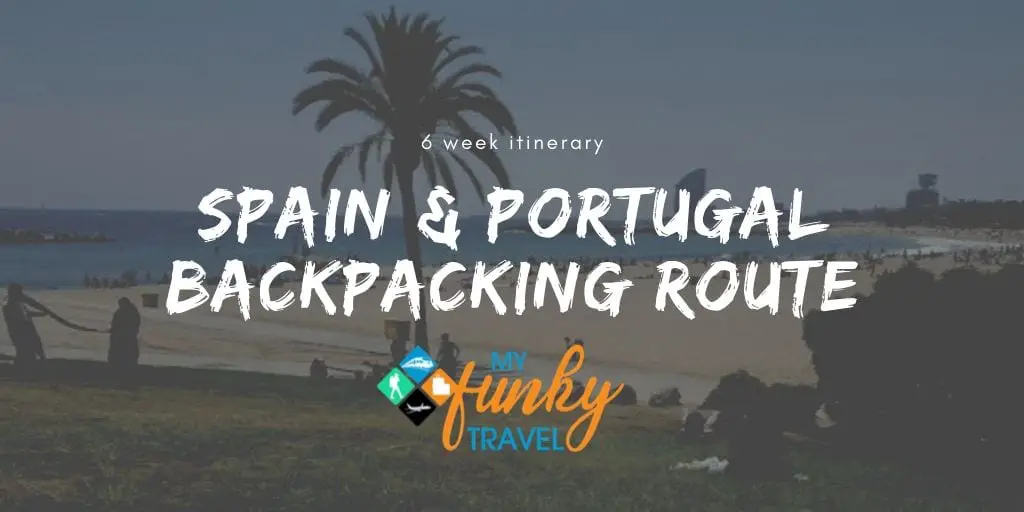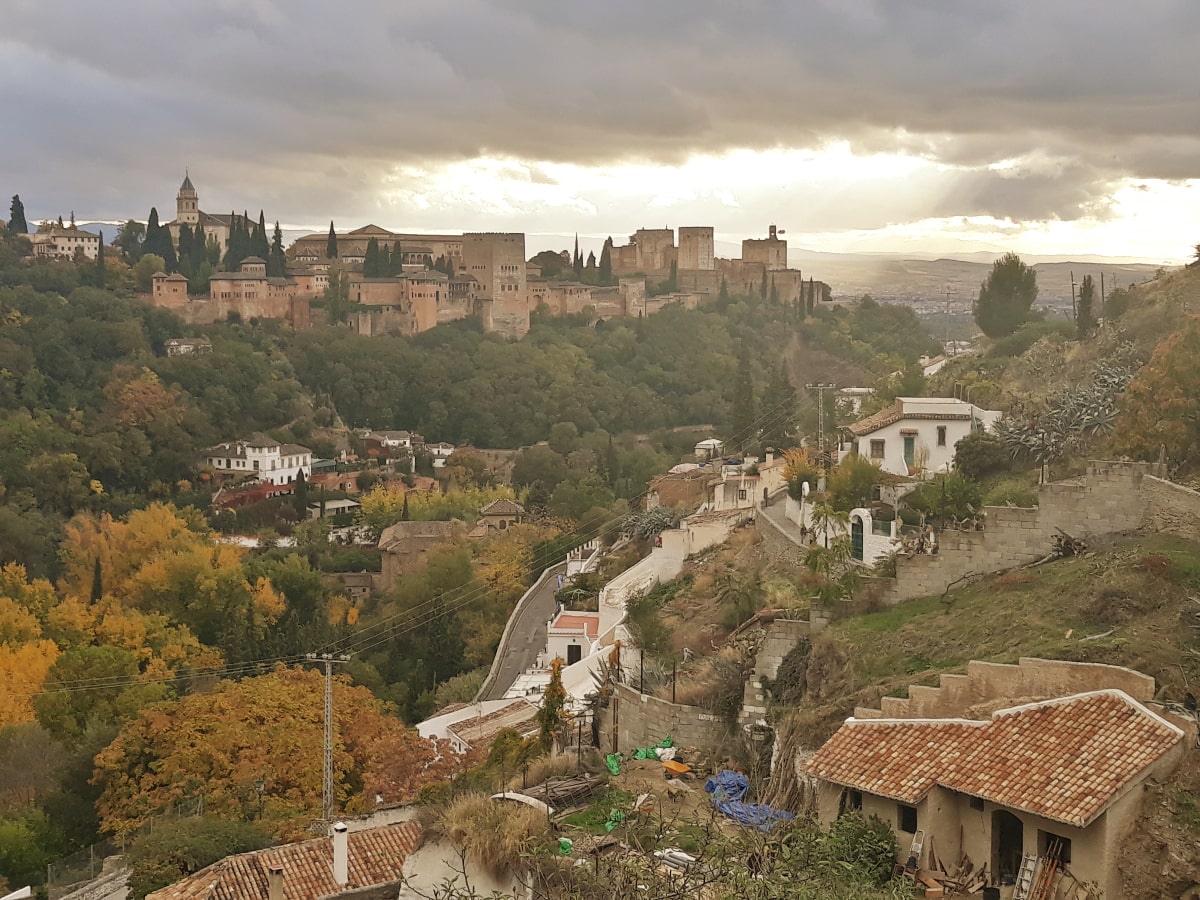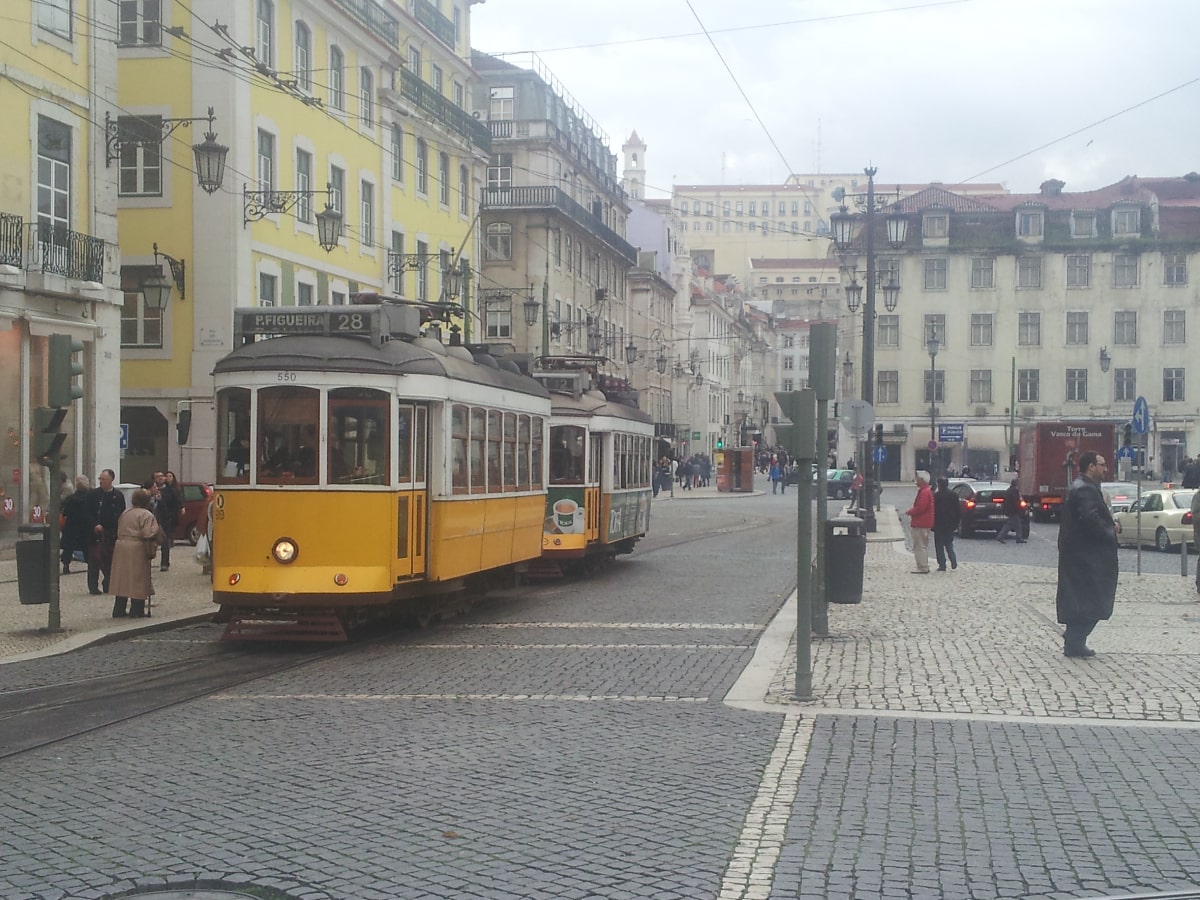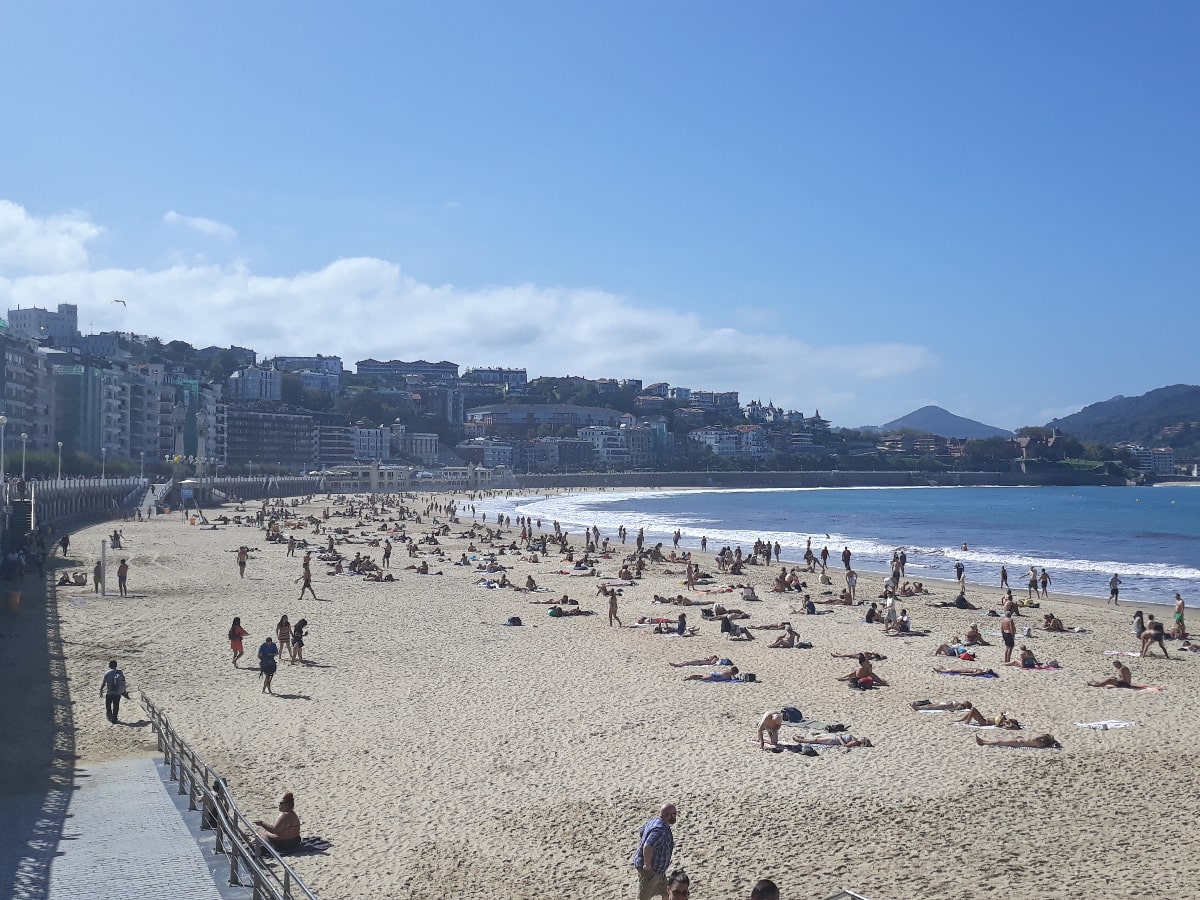The Iberian corner of Europe is one of the most popular travel destinations in the world. It boasts some of Europe’s best beaches, most historic cities and tastiest food and drink. They also like a good fiesta so no matter when you visit, your trip is likely to coincide with some form of celebration or festival and our Spain and Portugal backpacking route is a decent starting point for planning a trip.
Table of Contents
- Spain and Portugal Backpacking Route – A 6 Week Itinerary
- Backpacking Spain: Madrid & Andalusia
- Backpacking Portugal
- Backpacking Spain: The North & East
- Extending your Trip: Visit the Spanish and Portuguese Islands
- 2024 Update – How has backpacking Spain and Portugal changed in recent years?
Spain and Portugal Backpacking Route – A 6 Week Itinerary
How much does it cost to backpack Spain & Portugal?
Possible budget for this route: £1600-2000 | €1900-2400 | $2200-2750
This is based on exchange rates at the time of writing. Iberia is the cheapest part of Western Europe with Portugal very slightly cheaper than Spain but the difference is barely noticeable. Accommodation prices do shoot up during the summer months (particularly August) and around national holidays though so budget for more during those times.
Read more on the cost of travel in Spain and the cost of travel in Portugal.
Travel insurance for backpacking Spain & Portugal
The cost of travel insurance isn’t included in the budget figures above. You can get a quote in less than a minute from Heymondo who provide well reviewed international travel insurance for backpackers from all over the world. Read our Heymondo vs SafetyWing comparison for more on them.
How long does it take to backpack Spain & Portugal?
We suggest 6 weeks in Spain and Portugal for the route outlined below. It is a pretty complete itinerary but doesn’t include any extra trips to the islands which may be of interest to some people. It works on the basis of an average of 2 days at each destination. Some you’ll only need a day while somewhere like Barcelona you’ll probably want more time.
Backpacker jobs & work exchange options
You can extend your time in Spain and Portugal and save money by finding a work exchange position. To find them, you might want to consider joining Worldpackers with our discount code. They have over 200 opportunities in Spain and 100+ in Portugal at the time of writing. We also have a Worldpackers vs Workaway comparison for those serious about doing work exchanges to support their travels in Iberia.

Starting from Madrid, our itinerary for backpacking Portugal and Spain will see you start in Madrid before heading south to the laid back lifestyle of sunny Andalusia. A quick hop across the border into Portugal and soon you’ll be on the beautiful beaches of the Algarve. Next we move from the Southern coast all the way up Portugal taking in traditional towns, lively Lisbon and a glorious national park before re-entering Spain and visiting the scenic northern region of Asturias.
From there we move east towards the Pyrenees and pop into the unique Basque Country with its own language and strong cultural traditions. The same could be said of Catalonia and the route takes in buzzing Barcelona before finishing with some more beach time on the Mediterranean Coast, reaching its finale in Valencia, home of the paella and the famous Fallas celebrations.
Backpacking Spain: Madrid & Andalusia
Madrid
The largest city in Iberia, Madrid also has comfortably the biggest airport with flights to all four corners of the world so it is a logical starting point. Spend several days here, preferably at the weekend, and you will get a taste for the excellent nightlife that starts late (it’s 3:00 am before most clubs get going) and if you’re home before sunrise it’s considered an early night.
Pleasant day-trips include the historic towns of Segovia and Toledo, both roughly an hour outside the city by train or bus. There’s plenty to see and do in the Spanish capital itself though with the famous Prado Museum and giant Retiro Park among the best things to do in Madrid!
Granada

The skyline of this Arab-influenced city is dominated by the majestic Alhambra which is worth coming to Granada to see alone. The steep narrow streets are alive with Hookah bars and Moroccan arts and in some streets in the old town, you can almost forget which continent you are in. It also has some great walking routes into the surrounding hills which pass through some of the most interesting neighbourhoods including the peculiar but intriguing Gypsy Caves.
Sierra Nevada
The Sierra Nevada national park is an incredible area with snow-capped peaks and ski resorts just 50 kilometres or so from the heat of Spain’s Southern coastline. It’s possible to stay overnight in the park or visit it from Granada or one of the other nearby cities.
Cadiz
There are many things to love about Cadiz. Firstly it can claim to be the oldest city in Western Europe with 4,000 years of history to its name. Secondly it boasts one of the world’s most beautiful city beaches and has the climate to match. It also holds one of the biggest Carnaval celebrations in the world (usually in February).
Sevilla
Europe’s hottest city is scorching during the summer months when temperatures can reach well above 40°C. Doing as some locals do and taking a siesta during the afternoon heat is not a bad idea! It is one of Spain’s most historic cities and has some wonderful squares and buildings that retain all of their ancient elegance. Come during April (or early May) for the week-long party that is the Feria de Sevilla.
Getting from Spain to Portugal is a relative doddle with several bus companies connecting Seville to the Algarve from the city’s main coach terminal and in some cases train station. You can find advanced fares for around 10 Euros with no real premium despite the international nature of the trip. Given it is an internal border within Europe’s Schengen Zone, there are no passport checks at either end and the bus won’t stop at the border and the Seville-Faro-Lagos connections are generally the best route from Spain to Portugal, certainly in the south.
Backpacking Portugal
Tavira
A quaint introduction to Portugal comes in the form of the pretty riverside town of Tavira. Just a short ferry ride from the town, you reach the extremely sandy Ilha Tavira which is the perfect spot to soak up the Algarve sun for the first time.
Lagos
Lagos and the surrounding coastline is home to some of Europe’s most spectacular beaches thanks to stunning cliff formations which have been battered by the Atlantic for millions of years. The town is touristy but also boasts a backpacker and surfer scene that is more akin to Southeast Asia than Europe and it is an essential stop on any backpacking itinerary for Spain and Portugal.
Accommodation is cheap especially if you come outside the peak summer months of July and August and there are plenty of nice restaurants and lively bars to hit after dark. It’s also a decent base for exploring the surrounding areas and neighbouring towns such as Sagres and Portimao and the area is one of the best regions to spend summer in Portugal.
Vila Nova de Milfontes
Laid back Alentejo is a bit quieter and more relaxing than the Algarve region which receives the bulk of Portugal’s tourism. This town and its surroundings are home to some mysterious bays and it’s another good spot to surf but the waters might be a bit choppy for beginners.
Lisbon

Portugal’s rustic capital is falling apart but that’s all part of its quirky appeal and it is climbing the list of the most visited cities in Europe. Several historic districts perched on separate hills overlooking the slightly swankier centre are all waiting to be explored. Each has their own unique form of evening entertainment and nightlife ranging from traditional Fado bars and restaurants in Alfama to the exuberant street parties of Bairro Alto.
The city is also popular with people hoping to spend a longer period of time in this corner of Europe with living in Lisbon very affordable compared to most capitals in the region.
Sintra
The former royal sanctuary of Sintra can be visited as a day trip from Lisbon but it is worth staying overnight to experience Sintra in the dark. It’s an extremely picturesque mix of castles, misty forests and cobblestone streets.
Coimbra
Portugal’s most famous university town is buzzing with student life and it’s a nice stop half-way between the country’s two major cities (Lisbon and Porto). There are also some pretty impressive Roman ruins nearby.
Aveiro
Aveiro is frequently compared to Venice thanks to its canals and skilfully painted boats that glide along them. It’s another pretty university town and perhaps at it’s best in the summer when it is warm enough to go to the beautiful and clean beaches.
Porto
No Portugal backpacking route is complete without a visit to the nation’s stylish Second City. During the week, Porto is a pretty quiet, some might even say dull place but it has enough to captivate any visitors with a dramatic cliffside setting above the River Douro. As well as one of the best airports in Europe, it is also of course home to port wine and there are many tasting tours and wine houses where you can learn about the brewing process.
Parque Nacional da Peneda-Geres
You have to wait till you reach the northern tip of Portugal before you get to the country’s only official national park. Complete with pine forests, hilly peaks and winding rivers, it’s the perfect place to spend a few nights under the stars. Best to come in summer though unless you don’t mind the cold as this part of Portugal is considerably cooler than the Algarve and southern regions.
Backpacking Spain: The North & East
Asturias
Asturias is one of the least visited yet most beautiful provinces in Spain. Tucked away in the northwest, it’s not a natural stop for backpackers travelling through Spain but it’s very popular with locals. With weather and scenery which is more akin to that of Northern Europe, it will come as a big change to the country you left behind when crossing over into Portugal a few weeks earlier.
It’s a small coastal region which is great for hiking and there are numerous small towns and villages hugging the rugged coastline to explore. The likes of Gedres and Llastres are worth a visit although you may find more accommodation in Oviedo or Gijon, the two main Asturian cities.
Bilbao
The largest city in the Basque Country, Bilbao is a passionate city and the best place to come to try and understand the distinctive Basque region, its culture and history. The city has some interesting neighbourhoods but its main attraction is the spectacular Guggenheim Museum.
Donostia-San Sebastian

Further along the coast you reach another Basque city, San Sebastian (known as Donostia in Basque). It boasts a gorgeous crescent shaped beach and a vibrant old town. This is a food lovers paradise with delightful ‘Pintxos’ the local speciality, although many of the best places are notoriously expensive and may come as a bit of a shock for anyone trying to travel Spain on a budget.
Pamplona
Home of the infamous San Fermin Bull Runs where locals and a sizable number of crazy foreigners risk life and limb as they run around the streets of Pamplona trying to steer clear of large angry bulls. Sanfermines (in July) is a week of parties and drunken debauchery, the likes of which you may never have experienced. During the other 51 weeks of the year, Pamplona is a charming traditional town and a much quieter experience.
Huesca (for the Pyrenees)
Huesca is a picturesque Aragonese town with a tale or two to tell. There’s not much to do here and it’s not at all touristy, but it’s a decent base for anyone looking to explore the Pyrenees which offer all kinds of mountain based activities including numerous ski resorts.
Barcelona
One of the world’s most popular travel destinations and a big reason why Spain is one of the most visited countries in Europe. There is something a bit special about Barcelona and it is the pride and joy of Catalans, of whom a large portion of are in favour of breaking away from Spain altogether.
Experience the energy of La Rambla, the architecture of Gaudi, the passion of football at Camp Nou and party with an international crowd in one of Europe’s liveliest cities. You may need to pick and choose what you do as visiting Barcelona on a budget isn’t easy if you want to get to all the big attractions but there’s loads of cool stuff to do for free too.
Costa Dorada
Nestled away on the Costa Dorada, the small cities of Tarragona, Reus and Salou form a mini triangle. It’s probably best to choose one as your base and explore the other two from there. Tarragona is probably the best option for this and it has some well-preserved Roman structures like the large amphitheater and many pleasant plazas. Salou is the main beach resort in the region and gets very busy during the summer. If you’ve got the urge for some beach time and are feeling adventurous then head to one of the less crowded beaches on this coastline, of which there are plenty. Reus is famous for being the birthplace of Gaudi but not a great deal else.
Valencia
Spain’s third largest city has plenty to keep visitors entertained for a weekend or more. It’s best in the summer but is also fantastic during the Fallas festivities which include dramatic firework displays, performances and shows. It is also home of the most famous Spanish dish, paella.
Check out all our Europe backpacking itineraries:
iberia | central europe | baltics | balkans | hungary-romania-bulgaria |scandinavia | south caucasus | greece | UK
Extending your Trip: Visit the Spanish and Portuguese Islands
Our backpacking route is entirely on the Iberian mainland but both Spain and Portugal have some fantastic islands that are very popular with travellers. Almost all of them are served by budget airlines like Ryanair, Easyjet or Vueling so they are quite cheap and easy to get to.
The Balearic Islands (Spain)
Ibiza is Europe’s party capital with some hedonistic nightlife that attracts Europe’s young party-goers each summer for alcohol-fuelled fun and sunshine. Majorca, the largest of the trio, attracts a mixed crowd of families and holiday-makers, young and old. It is big enough to explore and escape the crowds and there are plenty of fun things to see and do. Menorca is small but beautiful and quieter than the other two main islands.
They can be reached by budget airlines from many Spanish cities or via ferry from cities on the Mediterranean Coast and are an easy addition to this backpacking route which ends in Valencia, less than 200 km west of Ibiza. If you book in advance, the flights are likely to be cheaper and are certainly much quicker.
While some resorts are destinations for mass tourism, backpacking in the Balearic Islands is certainly possible too.
The Canary Islands (Spain)
Popular for year-round sunshine and warm weather, the Canaries are just about the only place in ‘Europe’ where you can be confident the weather will be good enough to hit the beach in December or January. These volcanic islands are located off the coast of Africa in the Atlantic Ocean and are roughly a two hour flight from mainland Spain.
They are pretty chilled out places and a good place to rent out a car and explore the dark rocky scenery that is vastly different from everything else on the Iberian Peninsular.
Madeira (Portugal)
Heading north from the Canaries, you reach the lovely Portuguese island of Madeira. It’s still 600 miles from the European mainland and about half that from the coast of Morocco so flying in is the only realistic option. There are plenty of flights every day to Funchal from Lisbon and other major Portuguese cities.
Like its Spanish neighbours, Madeira boasts a mild climate all year round but the island is green and lush and has all sorts of fantastic mountain-based activities to get stuck into. Its major city, Funchal is a colourful place with unique culinary habits and different traditions from that of mainland Portugal.
The Azores (Portugal)
There are a number of daily flights to various airports in the Azores from Lisbon but you are likely to have to pay a bit more to reach them. Sparsely populated and not hit by an influx of tourism, they have a very different atmosphere from the other Iberian islands.
If you make the effort to get out here, you will not be disappointed. There are many ocean-based things to do in the Azores with great dolphin and whale watching opportunities, fishing trips and sailing voyages between the islands amongst your options. The islands also boast what is probably Portugal’s best beer, Especial.
Isolated in the Atlantic Ocean, they are closer to New York than much of Europe and many Azoreans have settled in the United States. There are flights here from cities such as Boston and Toronto so if you are coming from North America then consider flying here first and then onto mainland Iberia.
2024 Update – How has backpacking Spain and Portugal changed in recent years?
- Digital Nomadism: The big rise of remote work and digital nomadism has led to an increasing number of travellers combining backpacking with remote work in Spain and Portugal. Barcelona, the Canary Islands and Lisbon are among the biggest digital nomad hubs in the region and there are a host of other Spanish cities that offer pleasant and affordable living.
- Food and Wine Tourism: Spain and Portugal are both renowned for their culinary traditions and culture. Everything from tapas tours to visits to local markets, vineyards and wineries are increasing in popularity with visitors to Iberia.
- Travel Apps: The emergence of travel apps and online platforms has transformed the way backpackers plan and navigate their trips in Spain and Portugal. Buses, beds, trains and planes can now all be easily booked online from your mobile in just a few clicks while apps are increasingly a popular way for fellow travellers to connect with one another.
- Sustainable Tourism: Some travellers are seeking out eco-friendly accommodation and are more conscious when it comes to supporting local conservation initiatives such as beach clean-ups, sustainable agriculture projects, and cultural immersion experiences.
- Cheaper rail adventures: It’s cheaper to use Spain’s excellent high-speed rail network than it used to be. The emergence of viable competitors to Renfe which runs most of the trains in the country has helped drastically reduce prices on certain routes. For example, Madrid to Barcelona via high-speed rail is now possible for under 20 Euros if you book in advance and are a bit flexible on when you travel.
This Spain and Portugal backpacking route was last updated in November 2021.


Hello! Im going to Portugal in August,! I want to add Spain, but not sure which direction i should take my trip 🙂
Hi Kyra, August is great weather across all of Spain and Portugal so any of the destinations featured above are nice at this time of year. It wouldn’t really make any difference which direction you went in. Only thing to consider maybe in August is that inland cities such as Sevilla and Madrid can get seriously hot, so you might prefer to follow the coasts. It depends how many weeks you have but maybe you could start in Barcelona and work your way around the north of Spain and then travel southwards through Portugal, ending in the Algarve (or vice-versa)?
This was super useful and comprehensive! I am looking to go for about 2-3 weeks come December. I have already been to Barcelona and surrounding area. What would you suggest are the must stop places to tailor it to my timeframe?
Hi Lindsey,
Perhaps you could start in Madrid (3 days) then go down to Andalusia for a week or so and visit Granada and Sevilla plus maybe some day-trips from there before heading into Portugal and ending in Lisbon or even Porto if you have time. You could probably skip the beach/coastal places on the route seen as it’ll be pretty cold in December although Cadiz is still quite a nice city to visit even in the winter.
Thank you for this article! It contains really useful info about traveling to Spain and Portugal. I’ve also read an interesting blog post – highly recommended to check it out – https://www.imagetours.com/news/2017-is-the-year-to-experience-these-14-must-see-gems-of-spain-and-portugal/1783/
That was super comprehensive and helpful!!!! Thank you. 🙂 http://www.happynfull.com